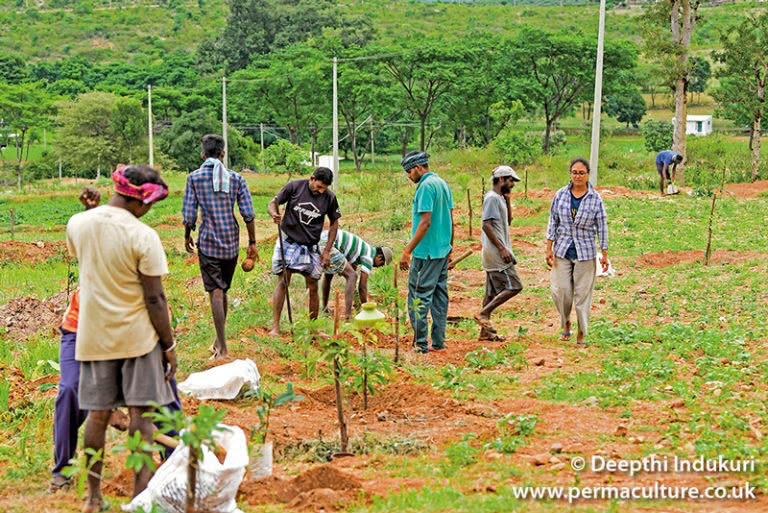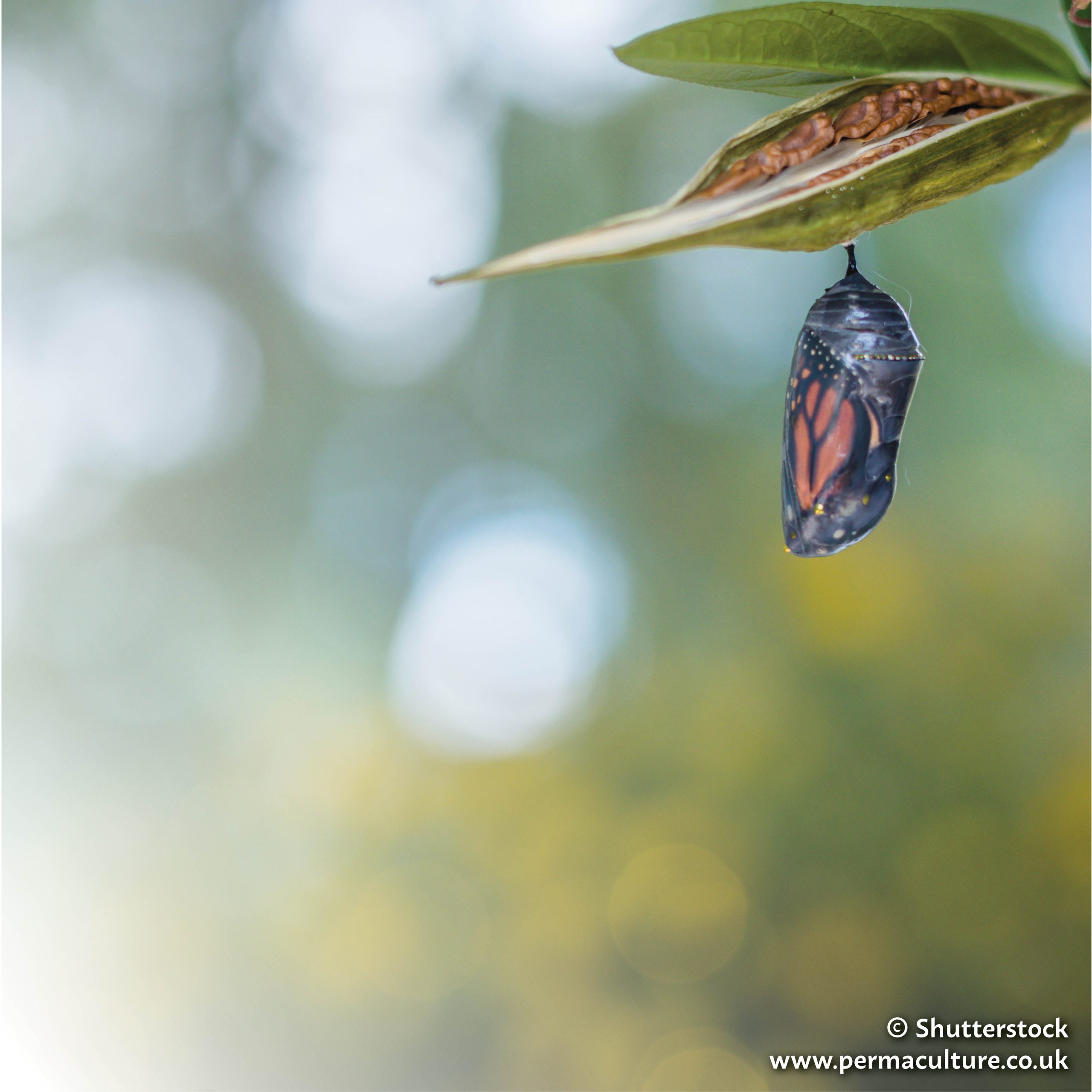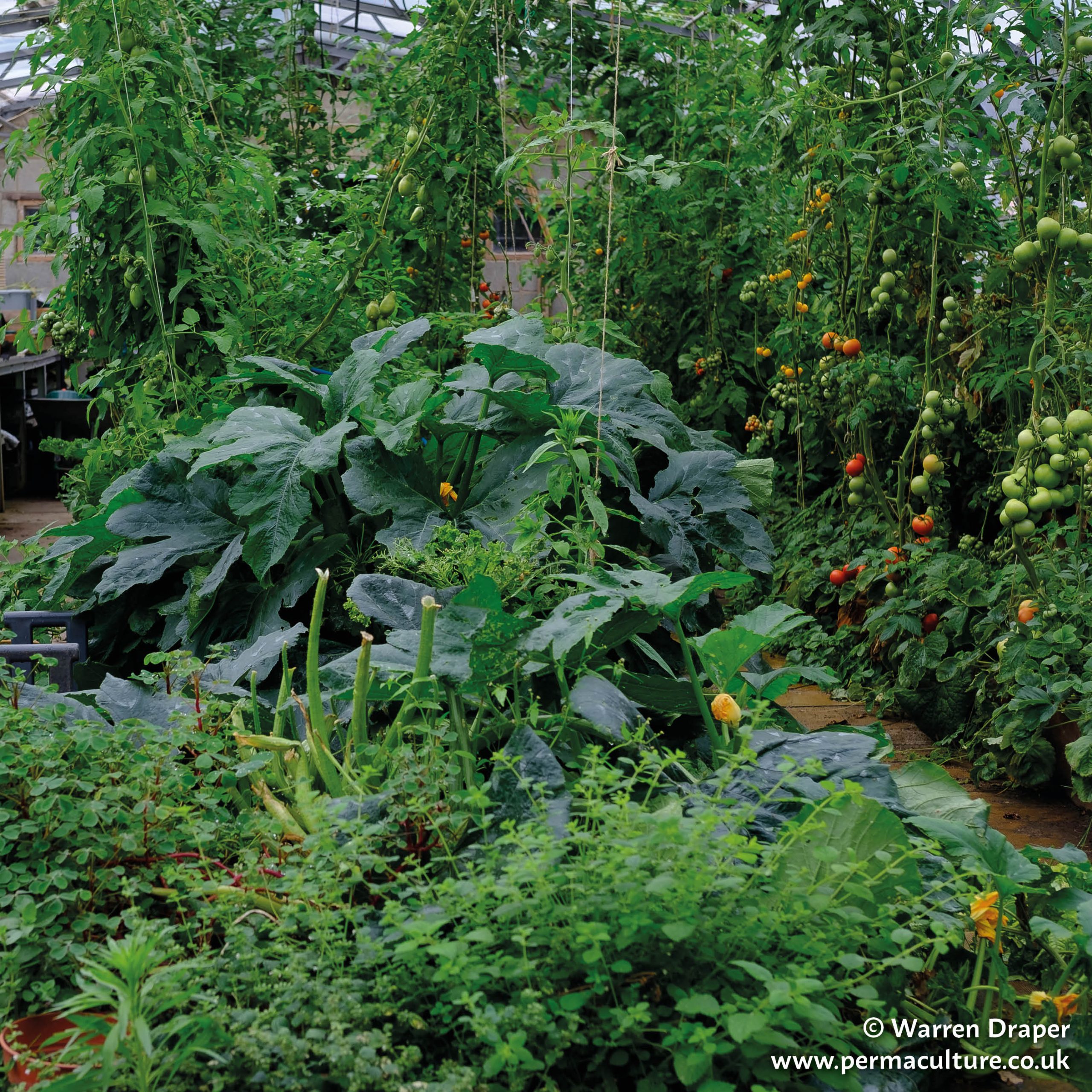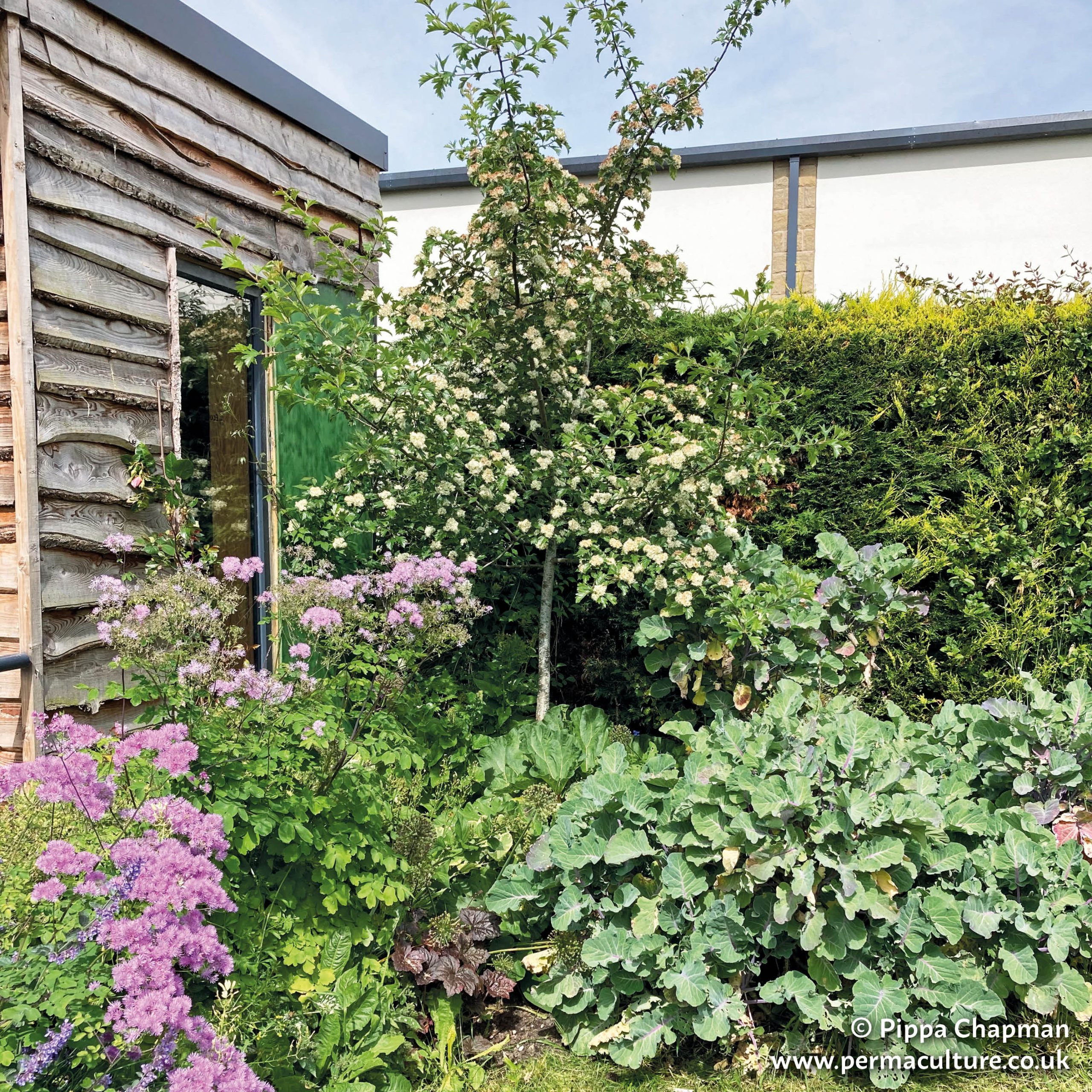In a permaculture design, each element has many functions, the minimum being three. Having three or more functions helps create a stable and diverse food growing system because each element is connected together, making energy cycle through the system rather than being lost as wastes, i.e. food production can be connected to animal husbandry, composting, useful structures etc… This diverse food growing ecosystem is the opposite to a monoculture which only has one yield and is of little or no benefit to the surrounding ecosystem. Often it can actively damage the surrounding ecosystem (i.e. annual ploughing loses topsoil, spraying with pesticides reduces insect populations, flailed hedges or worse hedge removal reduces biodiversity). Performing many functions therefore creates diversity of yield, resourcefulness, greater opportunity and, by allowing energy to flow throughout the system, enhances efficiency.
Take the humble yet marvellously multi-functional comfrey plant. A patch of comfrey in a garden can: Be cut as a compost activator; can make liquid comfrey manure to feed fruit trees, soft fruit and vegetables because its high potash content stimulates the production of flowers and the development of fruit; makes valuable bee and chicken forage; creates shelter for tender plants; can be planted as a barrier to stop weeds like couch invading a vegetable garden (as long as it is allowed to establish itself first – mulch with carpet, cut holes and then plant it); draws trace elements and nutrients from deep in the soil; accumulates potash which is released when cut and used as a top dressing or mulch; can be occasionally eaten in fritters; and is a powerful medicinal herb used for pulmonary complaints, aids the healing of broken bones (its folk name was Knitbone or Nipbone), can be applied as a poultice for ulcerous wounds and made into an ointment relieving inflammation, pain, and bruising.
In a monoculture, chickens are solely reared for eggs. Meat pies are a by-product, not a part of the main function. In a permaculture design, the noble chicken can have many functions: eggs, meat, manure, feathers, heat for a greenhouse, weeding the vegetable patch in ‘tractors’, pest control, recycling cooked kitchen waste, education for children, even friendship (chickens make good permaculture ‘pets’!). This multi-functional approach to keeping chickens has a number of benefits: it is more compassionate – the birds are happier and healthier – all wastes are converted into resources and the chickens are also able to share in some of the gardening tasks like weeding and pest control.
Hedgerows can have many functions. In our garden the mixed species hedgerow provides privacy and a valuable windbreak for the fruit trees. Most of the species in the hedgerow are native, thus supporting a diversity of species of birds and insects. The trees have been grown from locally harvested seed in Hampshire and provide a gene bank for conservation garden designers. Hedges can provide shelter for chickens and ducks, and berry bearing plants and insects can provide them with forage at the lower levels and berry harvests for human beings higher up. The hedge trimmings are converted into mulch, kindling and woodchip. Some of the hedge plants have been left to become standard trees that now provide more wind protection, firewood and food as well.
Our hedgerow is underplanted with useful trees and bushes like Elaeagnus x ebbingei, Rosa rugosa, cherry plum (Prunus myrobalan) and Godshill elder (an elder that has large berries originally grown by Deacon’s Nursery in Godshill on the Isle of Wight). These are allowed to grow to maturity whilst some of the plants which are currently sheltering them will be removed.
The hedges also provide bees and other insects with forage early in the year. In springtime the buckthorn gives us particular pleasure, bursting into exquisitely fine clouds of tiny white blossom, heralding the changing season and lifting the spirits in a way the poor old privet could never do!
These three examples demonstrate how a single element can have many functions, particularly when linked to other elements in a design. This approach has many benefits and is a creative approach to maximising yields which might otherwise go to waste.
1. Relative Location: An Original Permaculture Design Principle
What is Permaculture: Part 1 – Ethics
Maddy Harland is the co-founder and editor of Permaculture magazine and author of Fertile Edges – Regenerating the land, culture and hope.




